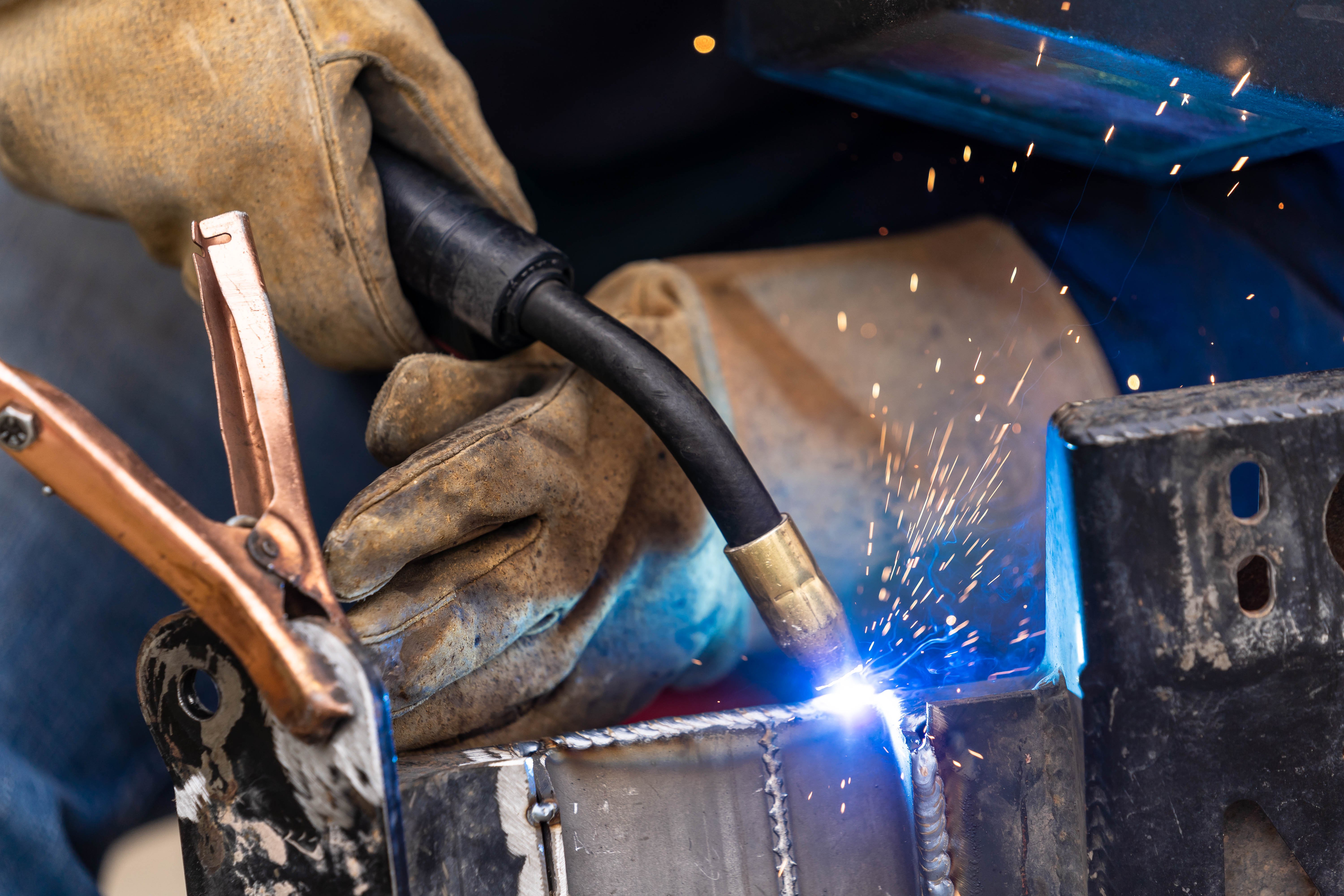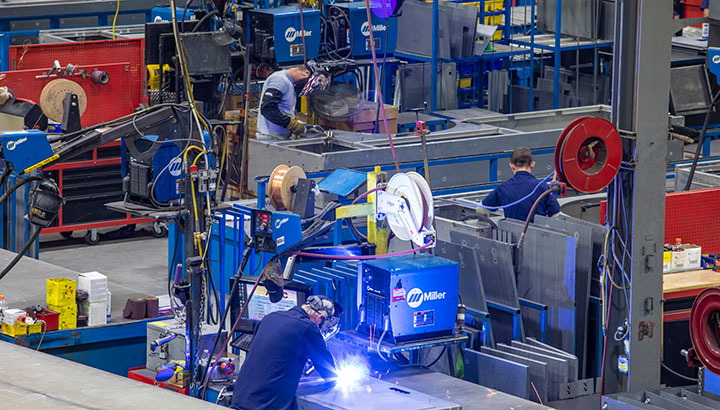Top welding defects Montana Mobile Welding and Repair Belgrade Welding helps eliminate
Usual Welding Repair Work Issues and Just How to Address Them Effectively
Welding repair services often experience an array of issues that can threaten the honesty of the last item. Usual troubles consist of insufficient infiltration, porosity, and misalignment, among others. Each problem offers special difficulties that require specific methods for resolution. Comprehending these issues is vital for welders aiming to boost their end results and abilities. This discussion will certainly explore these common welding repair work concerns and effective approaches to address them.
Insufficient Infiltration
Poor penetration occurs when the weld metal stops working to completely fuse with the base material, leading to weak joints and prospective architectural failings. This issue commonly originates from not enough warm input, incorrect electrode angle, or incorrect welding speed. Welders might encounter insufficient penetration as a result of a miscalculation of the needed criteria for a details product thickness or kind. Additionally, contamination on the base material's surface area can prevent reliable bonding, exacerbating the trouble. To resolve inadequate penetration, welders must assure proper setups on their tools and maintain a tidy work surface area. Normal examination of welds is suggested to determine any shortages early, permitting timely improvements and the prevention of compromised architectural honesty in bonded assemblies.
Porosity
Porosity is an usual problem in bonded joints that shows up as small gas bubbles caught within the weld steel. This flaw can compromise the integrity of the weld, leading to reduced strength and potential failing under tension. Montana Mobile Welding and Repair Belgrade Welding. Porosity usually arises from contamination, moisture, or inappropriate welding techniques, which enable gases to escape right into the liquified weld swimming pool. To deal with porosity, welders need to ensure correct surface preparation, maintain a tidy working atmosphere, and make use of suitable welding specifications. In addition, choosing the right filler product and securing gas can minimize gas entrapment. Regular evaluation and testing of welds can assist identify porosity early, guaranteeing timely rehabilitative actions are taken, thus protecting the high quality and integrity of the welded structure
Imbalance
Imbalance in welding can occur from different elements, including inappropriate configuration and thermal development. Comprehending the origin is essential for efficient resolution. Numerous modification strategies are offered to realign parts and ensure architectural honesty.
Causes of Imbalance
Welding imbalance usually comes from a selection of underlying problems that can jeopardize architectural stability. One key reason is incorrect fit-up of elements before welding, which can lead to spaces and unequal surfaces. Variations in thermal development throughout the welding process can likewise lead to distortion, especially if the products being signed up with have different coefficients of development. Additionally, inadequate fixturing and clamping may stop working to hold elements safely in location, resulting in motion throughout welding. Badly kept tools, consisting of welding equipments and devices, might present disparities in the weld grain, further adding to misalignment. Ultimately, driver error, originating from inadequate training or experience, can likewise play a substantial duty in developing misaligned welds.
Modification Methods Offered
Attending to imbalance successfully requires a combination of corrective techniques customized to the specific issues handy. One typical method is the usage of jigs or components to hold elements in the appropriate placement throughout welding, ensuring consistent alignment. Furthermore, pre-heating the products can help in reducing distortion and improve fit-up. For substantial misalignment, mechanical realignment techniques, such as using hydraulic jacks or clamps, can be utilized to correct the position prior to welding. Post-weld heat therapy may additionally be necessary to ease anxieties triggered by imbalance. Ultimately, mindful examination and change throughout the arrangement stage can protect against imbalance problems from ending up being substantial troubles, promoting a smoother welding procedure and boosting total structural honesty.
Distortion
Distortion is a common challenge in welding that can occur from various elements, consisting of unequal cooling and heating. Understanding the causes of distortion is necessary for executing efficient avoidance methods. Resolving this concern not only boosts architectural honesty but likewise improves the total high quality of the weld.
Reasons of Distortion
When subjected to the extreme warm of welding, products typically undergo adjustments that can result in distortion. This sensation mostly occurs from thermal growth and contraction throughout the welding procedure. As the weld area heats up, the material broadens; upon air conditioning, it contracts, which can create internal stress and anxieties. In addition, unequal home heating across a workpiece can exacerbate these anxieties, causing warping or bending. The kind of product additionally plays a substantial duty; steels with varying thermal conductivity and coefficients of development may respond in a different way, resulting in unforeseeable distortions. Additionally, bad joint layout and insufficient fixturing can add to misalignment during welding, boosting the chance of distortion. Understanding these causes is essential for efficient welding repair service and avoidance approaches.
Avoidance Techniques
Effective avoidance methods for distortion throughout welding concentrate on regulating heat input and making certain proper joint layout. Maintaining a regular heat input assists to minimize thermal expansion and contraction, which can cause distortion. Using strategies such as pre-heating the workpiece can likewise minimize the temperature slope, advertising uniform heating. Furthermore, choosing ideal joint layouts, such as T-joints or lap joints, can boost security and lower anxiety concentrations. Applying correct fixturing to safeguard the work surfaces in area additionally help in preserving placement during the welding process. Staggered welding series can distribute heat more uniformly, preventing local distortion. By using these techniques, welders can considerably reduce the possibility of distortion and boost the general quality of their welds.
Breaking
Breaking is an usual issue come across in welding repairs, frequently arising from various factors such as incorrect cooling rates, product selection, or poor joint prep work. The occurrence of fractures can significantly endanger the integrity of the weld, resulting in possible failings throughout procedure. To resolve this problem, welders must initially assess the root triggers, ensuring that products work and suitably selected for the certain application. Furthermore, managing the cooling price during the welding process is crucial; quick cooling can induce tension and lead to cracking. Correct joint style and preparation likewise add to reducing the risk. Executing these strategies can boost weld high quality and resilience, inevitably reducing the chance of breaking in completed weldments.

Incomplete Fusion
A significant concern in welding repair work is incomplete blend, which takes place when the weld metal does not sufficiently bond with the base material or previous weld passes - Montana Mobile Welding and Repair Belgrade Fabrication. This flaw can bring about weak points in the joint, potentially click here endangering the integrity of the bonded framework. Aspects contributing to incomplete fusion consist of insufficient warmth input, incorrect welding method, and contamination of the surface areas being signed up with. To address this problem properly, welders ought to assure correct pre-weld cleaning and surface area preparation, as well as readjust their welding parameters to attain ample infiltration and blend. Routine assessment during the welding procedure can likewise aid identify insufficient combination early, enabling for prompt rehabilitative steps to boost the total quality of the weld
Overheating
While welding repair services can enhance structural stability, overheating offers a considerable obstacle that can cause product degradation. Extreme warm throughout welding can modify the mechanical residential or commercial properties of steels, leading to reduced strength, enhanced brittleness, and warping. This sensation is particularly critical in high-stress applications where architectural reliability is vital. Determining getting too hot can entail aesthetic assessments for staining or distortion, in addition to monitoring temperature level during the welding process. To mitigate the dangers associated with overheating, welders need to utilize appropriate strategies, such as controlling heat input, changing travel rate, and utilizing suitable filler products. Furthermore, carrying out pre- and post-weld heat treatments can aid bring back material buildings and boost the total high quality of the repair work, making sure long-term performance and safety.
Often Asked Concerns
What Are the Typical Indications of a Welding Issue?

Just How Can I Evaluate My Welds for Top quality?
To check welds for quality, one can make use of visual evaluations, ultrasonic screening, and radiographic approaches. Each technique assures structural integrity, determines defects, and verifies adherence to specified criteria, eventually boosting the reliability of the bonded joints.
What Safety Preventative Measures Should I Take While Welding?
When welding, one ought to prioritize safety and security by putting on suitable individual protective equipment, ensuring proper ventilation, securing flammable materials away, preserving a clean workspace, and being aware of environments to stop injuries and accidents.
Can I Repair a Weld Without Redoing the Entire Joint?
Repairing a weld without redoing the entire joint is feasible, depending on the damages (Fabrication). Strategies such as grinding, adding filler product, or using a welding process can properly address particular flaws while maintaining the bordering framework
What Devices Are Necessary for Reliable Welding Services?
Important tools for efficient welding repair work consist of a welding maker, cord brush, grinder, protective equipment, clamps, and filler products. Each tool plays an essential duty in ensuring top quality and security throughout the fixing process. Porosity typically arises from contamination, moisture, or inappropriate welding methods, which enable gases to leave right into the molten weld pool. Improperly conserved devices, consisting of welding devices and tools, might introduce incongruities in the weld bead, additional contributing to misalignment. When subjected to the intense warmth of welding, products typically go through modifications that can lead to distortion. Breaking is an usual issue experienced in welding repair services, often resulting from various aspects such as improper air conditioning prices, material option, or insufficient joint prep work. A significant issue in welding repair services is incomplete combination, which happens when the weld steel does not appropriately bond with the base material or previous weld passes.